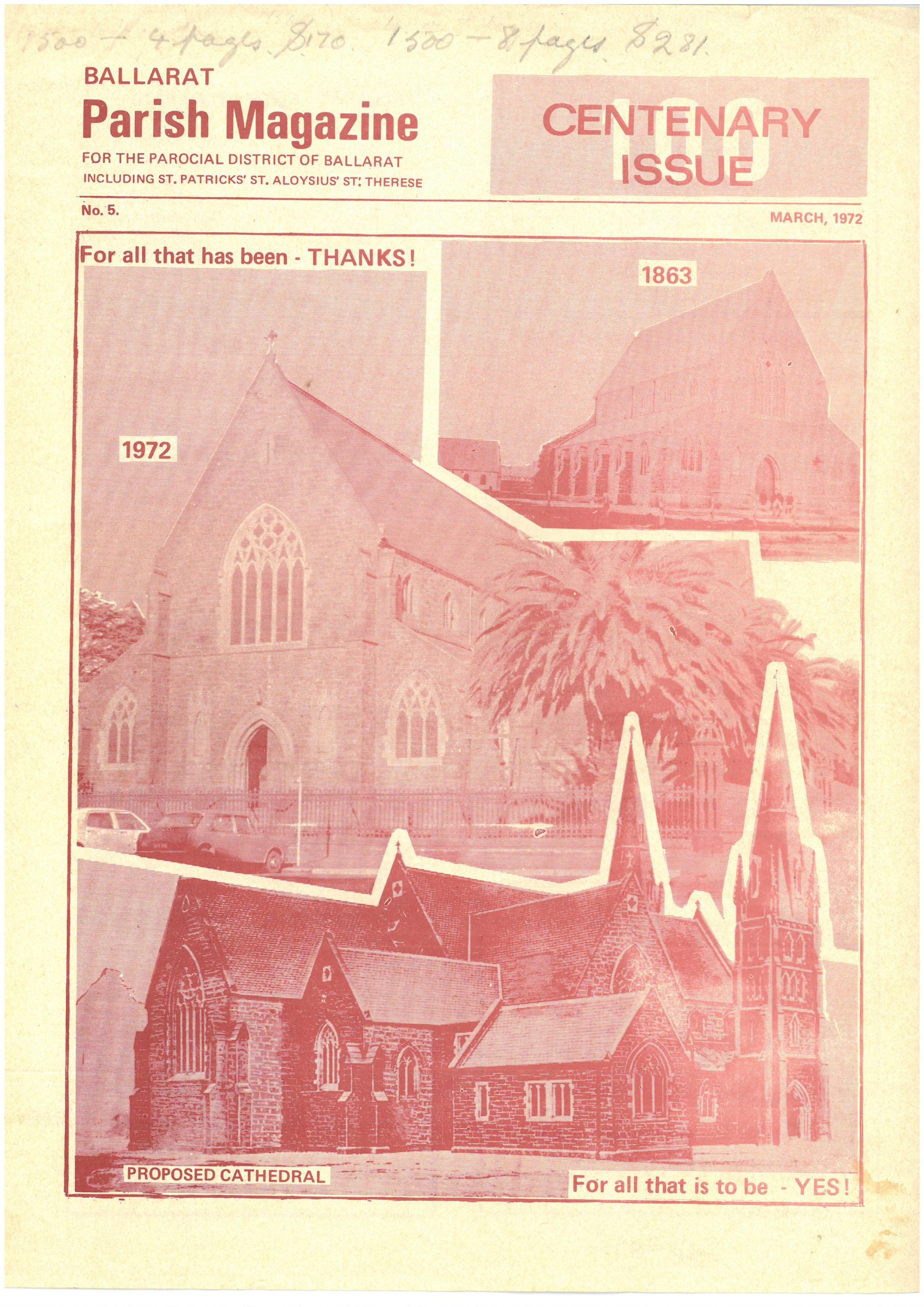- <1700s
- 1700s
- 1800s
- 1900s
- 2000s
- <1700
-
Pre Colonisation
- Aboriginal and Torres Strait Islander tribes were the first sovereign Nations of the Australian continent and its adjacent islands, and possessed it under their own laws and customs. This their ancestors did, according to the reckoning of their culture, from the Creation, according to the common law from ‘time immemorial’, and according to science more than 60,000 years ago.
- There may have been up to one thousand aboriginal tribes living on the land of Australia before European people arrived, each having its own language and traditions. They did not see Australia as one land mass neither did they see themselves as owning the land. They had names for their own tribal areas but not for the whole continent.
- 1700s
- 1770s
- 1780s
-
1700s
-
1770s
 1770: James Cook, a British Sea Captain, explored the east coast of the Australian Continent. He claimed the eastern portion of the continent for the British Crown naming it New South Wales. As well he was authorised to place any Indigenous inhabitants under rule of King of England.
1770: James Cook, a British Sea Captain, explored the east coast of the Australian Continent. He claimed the eastern portion of the continent for the British Crown naming it New South Wales. As well he was authorised to place any Indigenous inhabitants under rule of King of England.
James Cook
Public domain, via Wikimedia Commons -
1780s
- 1788 January 26: Captain Arthur Philip landed at Botany Bay to establish a penal colony on what had for over 60,000 years been the land of Indigenous Australians.
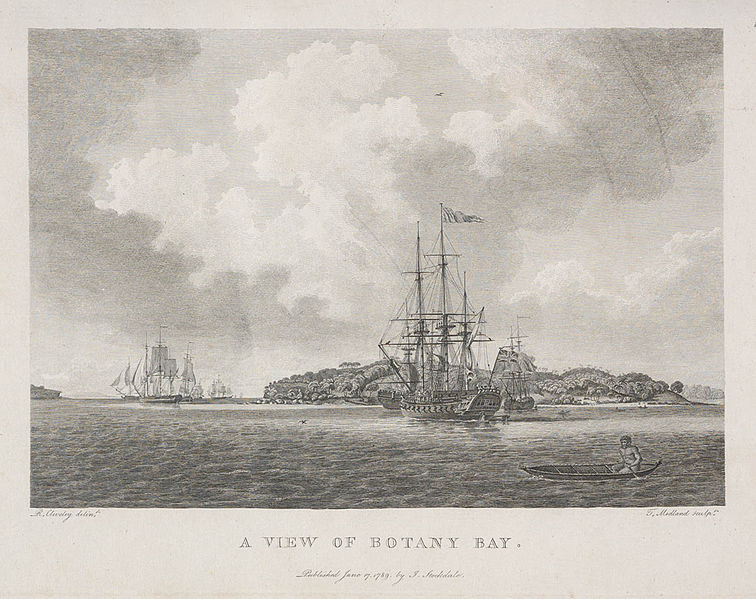
- 1788 January 26: The first Mass on Australian soil was celebrated by a Frenchman, Louis le Receveur – a member of the Franciscan Order. He was a Member of La Perouse’s expedition – a naturalist and astronomer; also a skilled botanist, geologist, chemist, meteorologist, and ecologist. La Perouse’s expedition arrived Botany Bay six days after the First Fleet. Louis would have celebrated Mass daily so it is safe to say that he said the first Mass here. He died on 17 February, 1788 and is buried at La Perouse, Sydney.
https://www.findagrave.com/memorial/143861726/louis-receveur
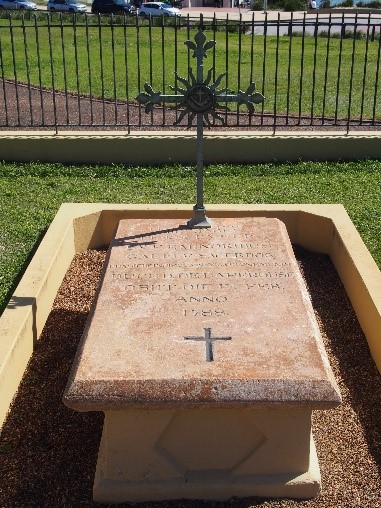
- 1788: New South Wales had no resident Catholic priest and no Catholic church. For 12 years there were no facilities for Catholic life and worship or for baptisms, marriages or burials. Catholics were obliged to use the services of Anglican chaplains.
- 1800s
- 1810s
- 1830s
- 1840s
- 1850s
- 1860s
- 1870s
- 1880s
- 1890s
-
1800s
- Governance of the Catholic Church in Australia was exercised by the body in Rome in charge of missions, namely the Congregation of the Propagation of the Faith. Because Australia was a British Colony, the first administrators of the Australian Catholic Church were the English Benedictines whose representatives in Mauritius acted on behalf of Rome.
- The first Catholic priests to arrive in the colony were convicts: James Harold, James Dixon and Peter O’Neil in 1800. They were Irishman, transported for involvement in Rebellion of 1798. Not officially appointed; not welcomed and it was feared that they would incite rebellion among Irish convicts. They all left once they had completed their sentence.
-
1810s
- 1817: In a request to the Colonial Office in London Governor Lachlan Macquarie recommended the name of the continent be changed from New Holland to Australia. By 1824 the British Admiralty had adopted the name to refer to the two colonies of New South Wales and Van Dieman’s Land.
- 1819 October: John Joseph Therry was appointed by Colonial Office as Chaplain to NSW with the approval of both church and state. He arrived the following year and began instruction, visitation, and was a friend to the Indigenous people. In 1821 he opened the first Catholic school in the colony and laid the foundation stone of St Mary’s Cathedral Sydney.
-
1830s
- In the 1830’s whalers and sealers had made temporary settlements around Portland Bay and Port Fairy.
- 1832: William Ullathorne an English Benedictine was appointed to New South Wales. He persuaded the Pope (Gregory XVI) to establish New South Wales as an official region of Rome and to appoint John Bede Polding, another Benedictine, as the first Bishop.
- 1834: Edward Henty made the first permanent European settlement at Portland in the south-west. Portland is the oldest town in Victoria and was founded as a coastal and pastoral settlement. The census of 1841 shows 203 Catholics in the district.
- 1837: Governor Bourke visited Port Philip and approved a plan for a new town to be called Melbourne. Ten years later Melbourne was proclaimed a city and in 1851 the Port Philip district was separated from NSW to become the Colony of Victoria with Charles La Trobe as the Governor. The population of Victoria in 1851 was 77,000.
- 1837: Jeremiah and Catherine Coffey, residents of the Port Philip Settlement asked Church authorities in Sydney to send either a resident or at least a visiting priest to the Catholics who were living there.
- 1839 April 25: the ‘Jemima’ left Portland for Sydney with a petition from the Roman Catholics of the area requesting Archbishop Polding to appoint a clergyman for them. The “Portland Mercury,” reporting this, states that the document bore 166 signatures, but many more names could have been obtained had people in the country been given an opportunity of attaching their names.
- 1839 May 19: the Franciscan priest, Fr Patrick Bonaventure Geohegan said the first Mass in the Port Philip District, (later Victoria). Two years later (4th October 1841) he laid the foundation stone of St Francis’ Church Melbourne.
-
1840s
- 1842 April: Pope Gregory established more formal church structures: Sydney was made an archdiocese; Hobart and Adelaide were established as dioceses. The Church Province of Sydney was responsible for administering the whole mission. Polding was named Archbishop of Sydney with Robert Willson and Francis Murphy the Bishops of Hobart and Adelaide respectively.
- 1844: The first visit of Priests to the Western District of Victoria: Archbishop Polding (at that time the Bishop of all of NSW of which Victoria was part), accompanied by two other priests (Archdeacon John McEncroe and Fr Daniel McEvery) travelled by horse and buggy from Geelong and visited the Western District, meeting Catholics, baptising children and administering the sacraments.
- 1844 November 1: The first Mass in what would become the Ballarat Diocese was celebrated in Port Fairy. This was said in a private home the exact location of which is unknown.
- 1844: Archbishop Polding wrote of his visit to the Western District
Three weeks were consumed in this journey and a tiresome, wearisome one it was through miles and miles of bogs and marshes amid snow and sleet, rain and wind such as I had never before experienced.
- 1844: Archbishop Polding wrote to a friend in Ireland …
I have lately returned from the southern part of my jurisdiction. … On horseback, travelling many days, I went to Port Fairy and Portland Bay at each of which places there are numbers of Catholics but no resident priest within two hundred miles. We baptised between 40 and 50 children, gave the last sacraments to those in danger of death … and gave Confirmation. In every part of that immense country there are many of our … religion, hundreds and hundreds who can never hear Mass who must live and die without the sacraments. My heart bleeds when I think of their distressed state… Portland Bay is 900 miles* from Sydney. (* almost 1500 kilometres)
- The first resident priest for Portland arrived in 1847.
Bishop Goold
Public domain, via Wikimedia Commons
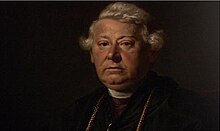
- 1848: James Alipius Goold, an Irish priest serving in Sydney, was appointed Bishop of Melbourne and travelled overland to his new diocese. He wrote in his diary:
I was consecrated Bishop of Melbourne on the Feast of the Transfiguration August 6th 1848. Consecrating Bishop, the Most Reverend Dr John Bede Polding, Archbishop of Sydney … I left Sydney on the 3rd September to proceed overland to my diocese, the extreme boundary of which, at the River Murray near Albury, was crossed by me on the morning of 28th September at 25 minutes to 10 o’clock.- 1848 October: Bishop Goold, first bishop of Melbourne, arrived in his diocese. His diary entry reads as follows:
When I arrived in Melbourne [on the 4th of October], the diocese had only three Clergymen, two churches – one in Melbourne, and the other at Geelong – and a commodious little chapel at Portland; in Melbourne, close to the church a small presbytery … a spacious Hall, which is used for a boys’ and girls’ school [and] a small school house.Bishop Goold’s diary prepared by the Melbourne Diocesan Historical Commission in 2009 available here
- 1849: In Portland a chapel had been built and soon after a school was started, also held in the chapel, with Miss Rosanna Phillipina Quinn as the first teacher. The average attendance was 25 children and she was paid a Government salary of twenty pounds a year.
- 1849: St Patrick’s Primary School Port Fairy was established.
-
1850s
- 1851: Victoria became a colony, separate from NSW. Charles La Trobe was appointed first governor.
- 1851: Discovery of gold sparked Victoria’s famous gold rush. An estimated 6000 diggers (miners) arrived each week seeking their fortune. The population of Victoria in 1851 was 77,000. Six years later it had increased to almost 384,000. Gold was discovered at Clunes and other strikes followed progressively throughout the Central Victorian region.
- 1851 October: The first Mass in the Ballarat district was celebrated by Father Patrick Dunne at diggings in Brown Hill in a borrowed tent.
- 1852: The Ballarat Parish is established.
- 1853: In Ballarat at the start of 1853 there were 850 children on the diggings. By the end of the year there were 3,600.
- 1853: In December Bishop Goold visited Ballarat, confirmed 32 children and, according to report, a group of Eureka diggers presented him with 33 ounces of gold to make a chalice.
- 1854: The Eureka Rebellion on the Ballarat goldfields.
- 1854: Fr Patrick Smyth, a young priest, protected and nursed the wounded miners after the Eureka Stockade rebellion.
-
1860s
- 1862: Government Land Acts open up Western Victoria to more settlement.
- 1865: August 15 – Tenders calling for the erection of the church fence as it is today, with three sides in stonework, cast iron rails, wickets and columns.
- 1869: Easter Sunday – The bell at St Patrick’s Cathedral, Ballarat was rung for the first time. The neighbours in Dawson Street complained that it was a public nuisance.
-
1870s
- 1870 June 8: Australian Bishops in Rome for the First Vatican Council asked the Pope, on account of the rapid population increase in Victoria, to establish two new dioceses. They proposed Ballarat and Sandhurst.
- 1872: Government funding to schools is cut and Mary MacKillop’s Sisters of St Joseph of the Sacred Heart take up teaching roles in many schools. Other orders of religious Sisters and Brothers, mostly from Ireland, are brought out to teach the children and care for the people of Victoria.
- 1874 March 31: Bishop Goold was informed by the Congregation de Propaganda Fide (the office responsible for the church in Australia) that a decree had been issued authorising the establishment of the Diocese of Ballarat.
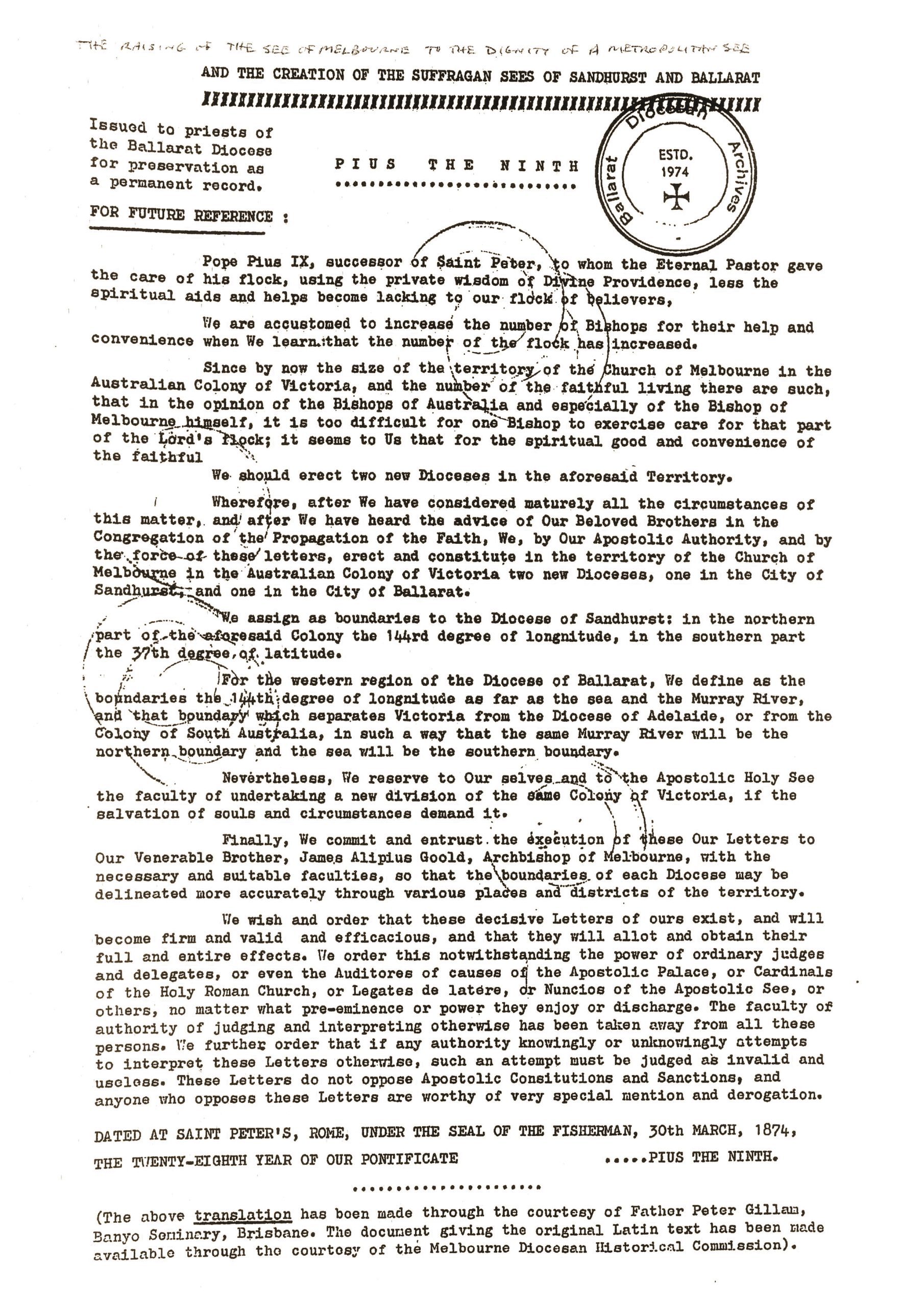
- 1874 March 31: Michael O’Connor, a priest in the diocese of Dublin, was informed that he had been appointed Bishop of Ballarat
- 1874 May 17: Bishop Michael O’Connor was consecrated in Rome as the first Bishop of Ballarat. Bishop Goold (newly-appointed as Archbishop of Melbourne) assisted at the ceremony.
- 1874 December 20: Bishop Michael O’Connor arrived in Ballarat.
- Once the Diocese of Ballarat was defined, the following eleven parishes, established as parishes of Melbourne, were transferred to the Ballarat Diocese:
o Ballarat St Alipius (est. 1852)
o Maryborough (originally Carisbrook est. 1859)
- 1874 December: Bishop Michael O’Connor arrived by train in Ballarat to be greeted by 3000 people. A procession took him to his official welcome in St Patrick’s cathedral where he praised the people for ‘the vitality of … [their] Faith’.
During his time as Bishop, Michael O’Connor saw to the building of 40 churches and many schools. He was devoted to the cause of Catholic education.
- 1874: Foundation of St Patrick’s Cathedral parish.
- 1875: Loreto Sisters, led by Mother Gonzaga Barry, at the invitation of Bishop O’Connor, made a foundation from Rathfarnham, Ireland to Ballarat
- 1876: The Christian Brothers came to Ballarat, invited by Bishop O’Connor, and established a Primary School in Skipton Street.
- 1876 June: The windows behind the high altar St Patrick’s Cathedral were damaged during a wild storm. Father Robert Cleary was saying Mass at the time and the Bishop was present.
-
1880s
- 1881: Sisters of Mercy, led by Mother Agnes Graham, made a foundation from Warrnambool to Ballarat East.
- 1883: Bishop Michael O’Connor died on February 14. He was buried in the crypt at St Patrick’s Cathedral.
- 1884: Fr James Moore was consecrated as 2nd Bishop of Ballarat on April 27 – the first Bishop to be ordained in St Patrick’s Cathedral.
- 1887: The Chaffey Brothers establish a settlement at Mildura opening up the north west of Victoria.
- 1888: Brigidine Sisters made a foundation from Ireland to Ararat.
- 1888: The Sisters of Nazareth established an aged care facility in Ballarat – their first in Australia.
- 1888: A community of Fathers of the Holy Ghost (Spiritans) arrived in Ballarat at the invitation of Bishop Moore to establish a college for boys.
- 1888: The Redemptorist Fathers (Congregation of the Most Holy Redeemer) made a foundation in Ballarat and work began on a new monastery in the suburb of Wendouree. The monastery was blessed and opened the following year.
-
1890s
- 1891: Diocesan Sisters of St Joseph of the Sacred Heart from Perthville made a foundation in Bungaree.
- 1891: St Patrick’s Cathedral Ballarat was officially consecrated by Archbishop Moran of Sydney. It was the first cathedral in Australia to be consecrated.
- 1891: Foundation of Birchip Parish (comprising Donald and Watchem)
- 1892: The Presentation Sisters made a foundation in Daylesford (not then in Ballarat Diocese)
- 1900s
- 1910s
- 1920s
- 1930s
- 1940s
- 1950s
- 1960s
- 1970s
- 1980s
- 1990s
-
1900s
- 1900: At the invitation of Bishop James Moore, Sisters of St Joseph of the Sacred Heart from Tasmania made a foundation in Creswick.
- 1904 June 26: Bishop James Moore died and was buried in the crypt at St Patrick’s Cathedral.
- 1905 March 3: Bishop Joseph Higgins formerly Bishop of Rockhampton, became the 3rd Bishop of Ballarat. Bishop Higgins was ordained Auxiliary Bishop of Sydney on March 31, 1883 and appointed as Bishop of Rockhampton on May 4, 1899 prior to translating to the Diocese of Ballarat.
- 1907: The Presentation Sisters made a foundation in Inglewood (not now in Ballarat Diocese).
- 1907: Foundation of Birregurra Parish
- 1907: Foundation of Sea Lake Parish
- 1907: Foundation of Penshurst Parish
- 1907: Foundation of Quambatook Parish
- 1908: Foundation of Terang Parish
-
1910s
- 1911: Foundation of Ouyen Parish (Formerly Woomelang).
- 1915 September 16: Bishop Joseph Higgins died and was buried in the crypt at St Patrick’s Cathedral
- 1916 August 24: Fr Daniel Foley was consecrated as 4th Bishop – the second Bishop to be ordained in St Patrick’s Cathedral. Fr Foley was Parish Priest of Terang prior to his appointment as Bishop.
- 1916: Foundation of Beech Forest Parish (later transferred to Apollo Bay)
- 1917: Foundation of Landsborough Parish
- 1918: Foundation of Cororooke Parish
- 1918: After World War I, soldier settlement and the Murray irrigation scheme brought a wave of new communities and parishes in the north and far west of the Diocese.
-
1920s
- 1920: Foundation of Harrow Parish
- 1922: Foundation of Donald Parish, separated from Birchip
- 1922: Foundation of Hopetoun Parish
- 1925: Foundation of Coleraine Parish
- 1926: Foundation of Manangatang Parish
-
1940s
- 1941 October 31: Bishop James Foley died at Koroit and was buried in the crypt at St Patrick’s Cathedral.
- 1941 December 23: Bishop James P O’Collins, Bishop of Geraldton, was appointed 5th Bishop of Ballarat. Bishop O’Collins was ordained Bishop of Geraldton on May 11, 1930 prior to translating to the Diocese of Ballarat.
- 1942 April 19: Bishop O’Collins was installed as Bishop of Ballarat.
- 1945: The aftermath of World War II causes significant immigration from Europe and there is growth in communities across the diocese.
- 1947: Priests, Missionaries of Sacred Heart purchased a property (Monivae) in Hamilton to establish a boarding school for boys.
- 1948: The Diocesan Journal, “Light” is established.
- 1949: Foundation of Apollo Bay Parish
-
1950s
- 1958: The Sisters of Saint Joseph came to Sea Lake to run the newly-established Saint Mary’s Primary School. They served the communities of Sea Lake, Culgoa, Nandaly, Berriwillock and Woomelang.
-
1960s
- 1968 December 4: Fr Ronald Austin Mulkearns was ordained Coadjutor Bishop of Ballarat.
-
1970s
- 1971 May 1: Bishop Ronald Mulkearns was installed as 6th Bishop of Ballarat.
- 1971: Foundation of Simpson Parish – later joined with Timboon
- 1974: The centenary of the Diocese was marked by celebrations held on March 22.
- 1978: Parish of Inglewood transferred from Ballarat Diocese to Sandhurst Diocese.
- 1979: Centacare Ballarat (then known as Ballarat Diocesan Family Services) is established to provide support and social welfare services to all people in the Diocesan area. Centacare is now known as CatholicCare Victoria.
-
1980s
- 1980: Parish of Gordon transferred from Melbourne Archdiocese to Ballarat Diocese
- 1983 November 25: Bishop James P O’Collins died and was buried in the crypt at St Patrick’s Cathedral.
- 1986: Establishment of the Catholic Diocese of Ballarat Foundation.
- 1986: Final issue of Diocesan journal “Light” in December.
- 1988: First issue of new Diocesan journal Our Diocesan Community in July.
-
1990s
- 1991 November 22: Mass was held to celebrate the Centenary of the Consecration of St Patrick’s Cathedral.
- 1992: Parish of Daylesford transferred from Melbourne Archdiocese to Ballarat Diocese.
- 1995 August 11: The Diocese of Ballarat celebrates the Beatification of Mary MacKillop.
- 1997 May 30: Bishop Ronald Mulkearns resigned as Bishop of Ballarat.
- 1997 July 23: Bishop Peter Joseph Connors was installed as 7th Bishop of Ballarat. Bishop Connors was ordained Auxiliary Bishop of Melbourne on May 21, 1987 prior to his being appointed to the Diocese of Ballarat.
- 2000s
- 2010s
- 2020s
-
2000s
- 2000 April 26: Mass for the Dedication of the Altar at St Patrick’s Cathedral following renovations.
- 2003: Diocesan Assembly 2003 – 2004 plan launched in May.
- 2004 May 14 & 15: Diocesan Assembly, “Releasing the Gifts” held at Damascus College Mt Clear after twelve months of preparation.
- 2005: Launch by the Ballarat Diocesan Catholic Education Office of a new Religious Education P-12 curriculum Awakenings.
- 2008 July 9-13: World Youth Day, “Days in the Diocese”. The Ballarat Diocese hosts pilgrims from Canada, East Timor, Ireland, Macau, Potugal and the United States of America prior to WYD in Sydney.
-
2010s
- 2012 July 31: Bishop Peter Connors retired as Bishop of Ballarat.
- 2012 August 1: Fr Paul Bernard Bird CSsR was appointed 8th Bishop of Ballarat.
- 2012 October 1: Mass of Thanksgiving to mark the retirement of Bishop Peter Connors is celebrated at St Patrick’s Cathedral.
- 2014 July 20: Opening and blessing of new church in Buninyong due to growth in the area and the old church being too small.
- 2014: Announcement of new Catholic primary school to be built soon at Lucas in West Ballarat to meet growing demand – Siena Catholic Primary School.
- 2016: The Diocesan Sacraments of Initiation Catechetical Resource, “Let the Children Come” was launched by Bishop Paul Bird CSsR.
- 2016 April 4: Bishop Ronald Mulkearns dies.
- 2017 May 21: Mass to celebrate the 30th Anniversary of Episcopal Ordination of Bishop Peter Connors.
- 2018 July 1: Formation of East Wimmera Parish, comprising the parishes of St Arnaud, Birchip, Charlton, Donald, and Wycheproof.
- 2018 July 1: Formation of Western Border Parish comprising the parishes of Hamilton, Casterton, Coleraine, Edenhope, Harrow, and Penshurst.
- 2018 July 1: Formation of Northeast Mallee Parish comprising the parishes of Swan Hill, Quambatook, and Sea Lake.
- 2019 July: Diocese of Ballarat Catholic Education Limited (DOBCEL) established as a new model for governance for diocesan Catholic Schools. (DOBCEL website)
-
2020s
- 2021 July 1: Formation of Wimmera-Mallee Parish comprising the parishes of Horsham, Hopetoun, Nhill, and Warracknabeal
- 2021 October 1: Formation of South West Coast Parish comprising the parishes of Koroit, Port Fairy, Dennington, Warrnambool West and Warrnambool.
- 2022 July 1: Warrnambool East Parish joined South West Coast Parish.
- 2022 July 1: Formation of Hampden Parish comprising the parishes of Mortlake and Terang
- 2022 July 1: Formation of Gariwerd Parish comprising the parishes of Ararat, Landsborough, and Stawell
- 2023 July 1: Formation of Sunraysia Parish comprising the parishes of Merbein, Mildura, and Redcliffs
- Diocesan Assembly – November 13 & 14, 2024 at Federation University, Ballarat



